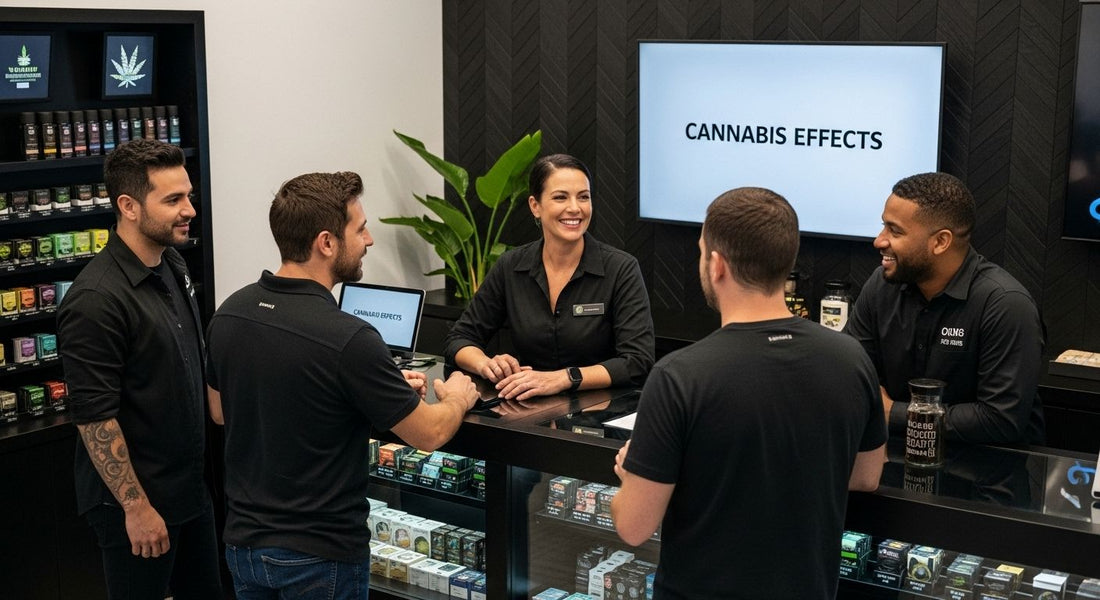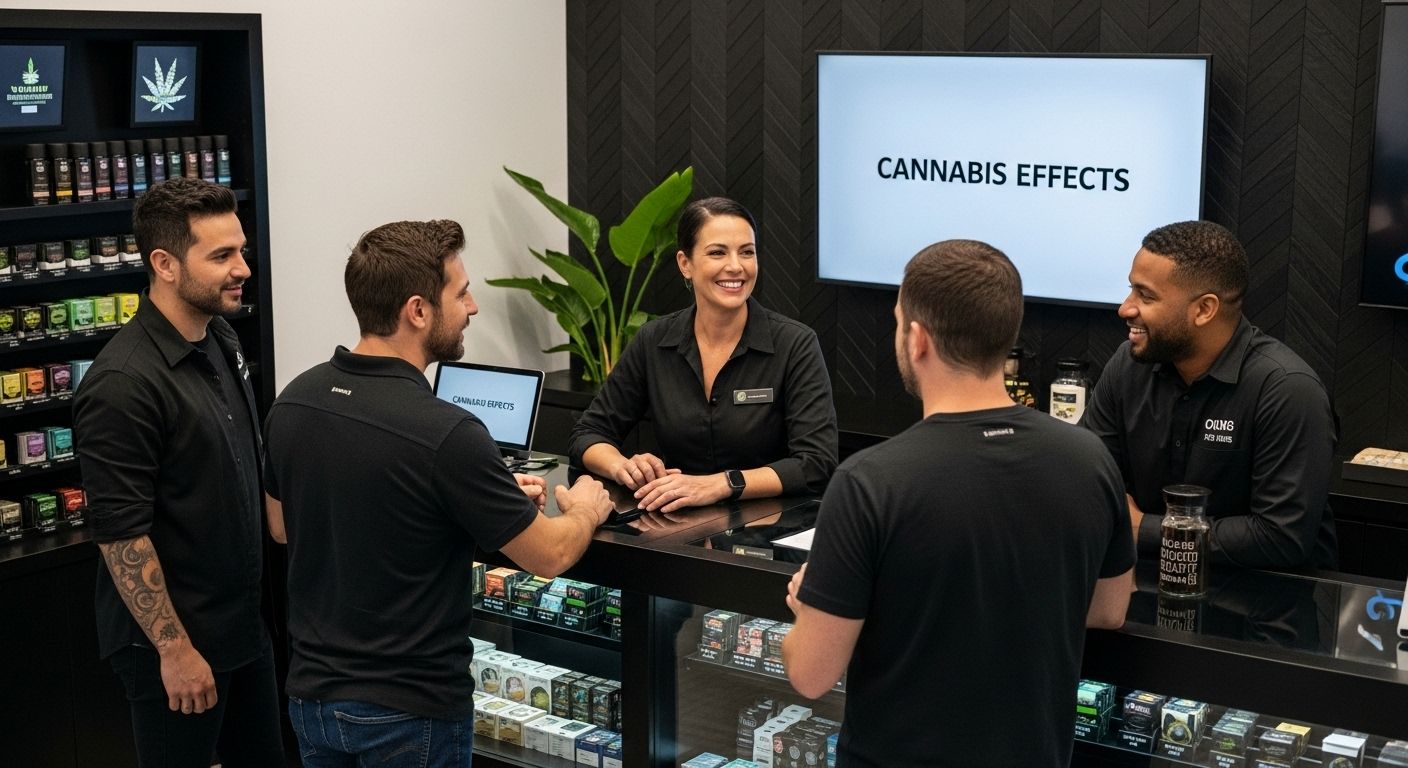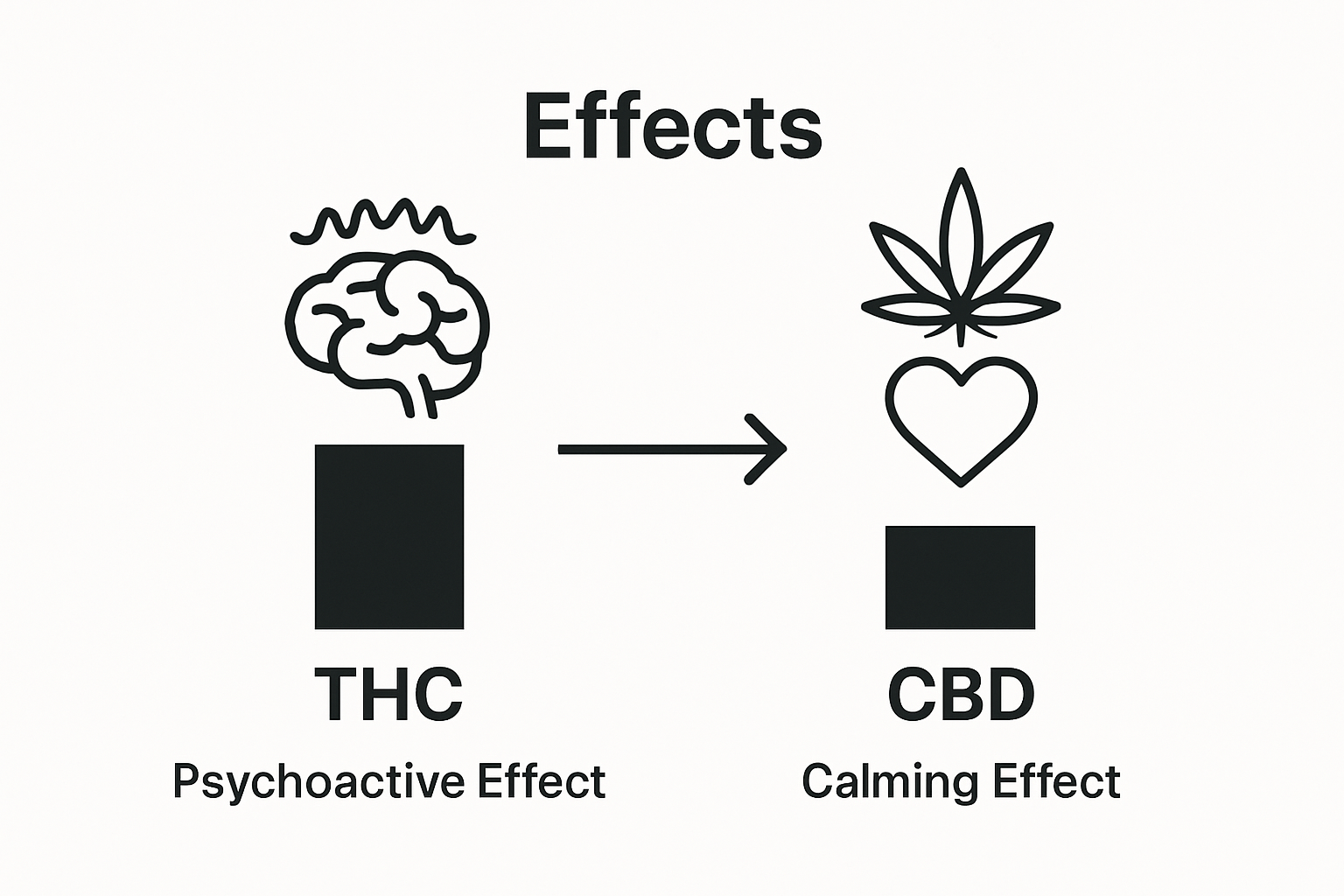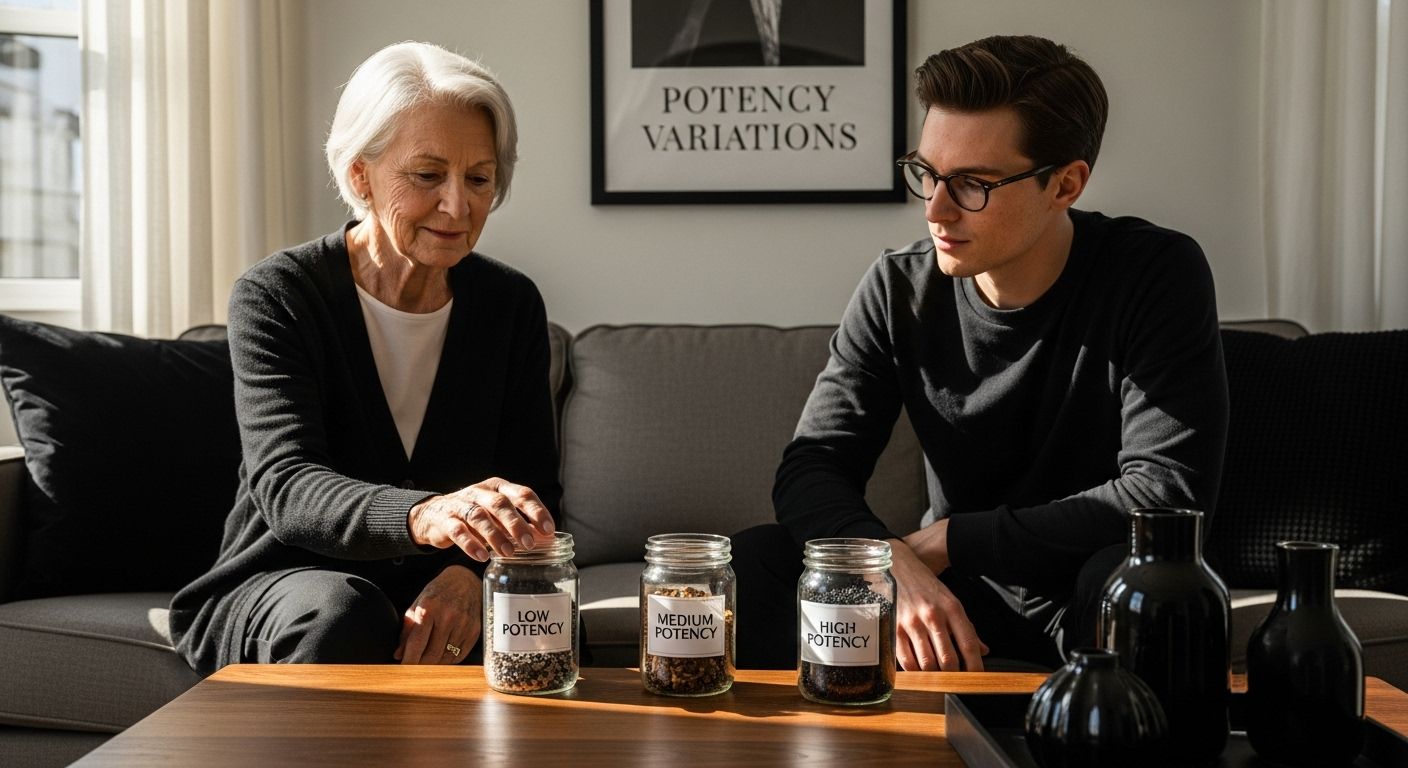Understanding Cannabis Effects by Potency
Written by California Blendz


Most people think cannabis is all about the strain or the flavor. Turns out, what really matters is potency and it can make or break your entire experience. Some modern strains reach THC levels of over 25 percent, which is five times stronger than classic varieties from just a few decades ago. That means one puff could hit like a whole joint used to and the surprising truth is that knowing the numbers behind cannabis potency might be the biggest factor in whether you feel relaxed, overwhelmed, or just plain disappointed.
Table of Contents
- What Is Cannabis Potency And Why Is It Important?
- How Potency Influences Cannabis Effects On The Body
- Understanding The Relationship Between THC, CBD, And Other Cannabinoids
- Varieties Of Cannabis Potency And Their Unique Effects
- Real-World Implications Of Cannabis Potency For Users
Quick Summary
| Takeaway | Explanation |
|---|---|
| Understand cannabis potency levels | Potency determines strength and effects, crucial for informed choices in consumption. |
| Match potency with personal tolerance | Selecting appropriate potency helps manage experiences and potential side effects. |
| Recognize THC and CBD roles | THC is psychoactive, while CBD offers therapeutic effects without intoxication. |
| Consider health and safety factors | Higher potency can lead to increased risks of anxiety and cognitive impairment. |
| Acknowledge legal implications | Potency may affect employment and legal status due to varying regulations. |
What is Cannabis Potency and Why is it Important?
Cannabis potency represents the concentration of active compounds, primarily tetrahydrocannabinol (THC) and cannabidiol (CBD), within cannabis products that determine their overall strength and potential effects. Understanding cannabis effects by potency is crucial for consumers seeking specific therapeutic or recreational experiences.
The Science Behind Cannabis Potency
Potency measures the percentage of cannabinoids present in the plant material or product. Modern cannabis strains can vary dramatically in their cannabinoid content, ranging from low potency options around 5% THC to high potency varieties exceeding 25% THC. Research from the National Institutes of Health highlights that increased THC concentrations directly correlate with more intense psychoactive and physiological responses.
Key factors influencing cannabis potency include:
- Genetic strain characteristics
- Growing conditions and cultivation techniques
- Harvesting and curing processes
- Storage methods and environmental exposure
Why Potency Matters for Consumers
Knowing cannabis potency helps users make informed decisions about their consumption. Different potency levels produce varying effects, which can significantly impact user experience. Lower potency products might offer mild relaxation, while high potency options could provide intense therapeutic relief or strong psychoactive experiences.
Consumers should consider potency when selecting cannabis products to:
- Match personal tolerance levels
- Manage potential side effects
- Achieve desired therapeutic or recreational outcomes
- Ensure safe and controlled consumption
For those interested in learning more about understanding nuanced cannabis characteristics, our guide on cannabis flower potency provides comprehensive insights into selecting the right product for individual needs.
How Potency Influences Cannabis Effects on the Body
Cannabis potency directly impacts physiological and neurological responses, creating complex interactions within the human endocannabinoid system. These interactions determine the intensity, duration, and overall experience of cannabis consumption.
Neurological Response Mechanisms
When cannabis enters the body, cannabinoids like THC and CBD interact with specialized cannabinoid receptors located throughout the brain and nervous system. Higher potency products introduce more concentrated cannabinoids, which can dramatically amplify neurological responses. Research from the National Institutes of Health indicates that rising THC concentrations are linked to significant changes in cognitive processing, potentially impacting spatial working memory and neurological function.
Key neurological interactions include:
- Binding with CB1 receptors in the brain
- Modulating neurotransmitter release
- Influencing emotional regulation centers
- Altering sensory perception mechanisms
Physiological and Psychological Impact
Potency determines the magnitude of cannabis effects across multiple bodily systems. Low potency cannabis typically produces mild, manageable experiences, while high potency variants can trigger more intense physiological reactions. These reactions might include elevated heart rate, altered pain perception, changes in appetite, and modified stress responses.
Psychological effects vary based on potency levels, potentially causing:
- Heightened sensory experiences
- Increased relaxation or anxiety
- Modifications in mood and emotional state
- Potential short term memory alterations
For individuals seeking deeper understanding of how cannabis interacts with human biology, our comprehensive potency guide offers detailed insights into these complex biochemical processes.
Understanding the Relationship Between THC, CBD, and Other Cannabinoids
Cannabinoids are complex chemical compounds that interact with the human body in sophisticated ways, creating unique physiological and psychological experiences. While THC and CBD are the most well known cannabinoids, they represent just two of over 100 identified compounds found in cannabis plants.
Cannabinoid Interaction Mechanisms
THC (tetrahydrocannabinol) and CBD (cannabidiol) interact differently with the body’s endocannabinoid system.
 THC produces psychoactive effects by binding directly to CB1 receptors in the brain, while CBD modulates receptor activity without causing intoxication. Research from the National Institute on Drug Abuse indicates that the average THC concentration has significantly increased over recent decades, altering cannabis interactions with human physiology.
THC produces psychoactive effects by binding directly to CB1 receptors in the brain, while CBD modulates receptor activity without causing intoxication. Research from the National Institute on Drug Abuse indicates that the average THC concentration has significantly increased over recent decades, altering cannabis interactions with human physiology.
Key cannabinoid characteristics include:
- Unique molecular structures
- Different binding affinities to cannabinoid receptors
- Varied potential therapeutic applications
- Complex interactions with the nervous system
The Entourage Effect and Cannabinoid Synergy
Cannabinoids do not function in isolation but create synergistic interactions known as the entourage effect. This phenomenon suggests that the combined presence of multiple cannabinoids and terpenes can produce more comprehensive and nuanced effects than individual compounds alone. Some cannabinoids might amplify or moderate the impacts of others, creating a complex biochemical conversation within the body.
Potential interactions involve:
- Enhancing therapeutic potential
- Moderating psychoactive experiences
- Balancing physiological responses
- Reducing potential negative side effects
For cannabis enthusiasts interested in exploring the intricate world of cannabinoid interactions, our detailed guide on THCa and THC differences provides deeper insights into these fascinating molecular relationships.
This table outlines the main cannabinoids discussed in the article and compares their key characteristics and effects on the human body.
| Cannabinoid | Psychoactive? | How It Works | Typical Effects |
|---|---|---|---|
| THC | Yes | Binds directly to CB1 receptors | Euphoria, altered perception, |
| in the brain | psychoactive effects | ||
| CBD | No | Modulates receptor activity, | Calming, therapeutic effects, |
| does not bind directly | reduces anxiety, non-intoxicating | ||
| Other (over | Varies | Interact in complex ways with | Contribute to entourage effect |
| 100 total) | endocannabinoid system | and influence therapeutic outcome |
Varieties of Cannabis Potency and Their Unique Effects
Cannabis potency ranges dramatically across different strains, creating a diverse landscape of potential experiences and therapeutic applications. Understanding these variations helps consumers make informed choices about their cannabis consumption.

Low Potency Cannabis Varieties
Low potency cannabis typically contains THC concentrations between 5% to 10%, offering mild and manageable effects. These varieties are often preferred by novice users or individuals seeking subtle relaxation without intense psychoactive experiences. Balanced strains in this category provide gentle mood enhancement and minimal cognitive disruption.
Characteristics of low potency cannabis include:
- Minimal cognitive impairment
- Reduced risk of anxiety
- Subtle physiological relaxation
- More predictable and controlled experiences
High Potency Cannabis and Intense Experiences
High potency cannabis encompasses strains with THC concentrations exceeding 20%, delivering powerful and potentially overwhelming effects. Research from the medical journal Addiction indicates that elevated THC levels correlate with increased risks of memory impairment and potential psychotic symptoms. These varieties demand experienced consumption and careful dosage management.
Unique characteristics of high potency cannabis involve:
- Profound psychoactive experiences
- Rapid onset of effects
- Potential for intense therapeutic relief
- Higher potential for cognitive alterations
For cannabis enthusiasts seeking deeper understanding of potency variations, our comprehensive cannabis potency guide offers detailed insights into navigating these complex botanical experiences.
Below is a comparison table summarizing the key differences between low potency and high potency cannabis varieties, highlighting their unique effects and user considerations.
| Category | Low Potency Cannabis | High Potency Cannabis |
|---|---|---|
| Typical THC Content | 5% - 10% | Over 20% |
| Suitable For | Novice users | Experienced users |
| Main Effects | Mild relaxation, gentle mood | Intense psychoactive, powerful |
| Cognitive Impact | Minimal impairment | Potential memory/cognition changes |
| Risk of Anxiety | Reduced risk | Higher risk |
| Control & Predictability | More predictable | Less predictable, rapid onset |
| Therapeutic Use | Subtle, manageable relief | Intense, targeted relief |
Real-World Implications of Cannabis Potency for Users
Cannabis potency extends far beyond laboratory measurements, directly impacting individual experiences, health outcomes, legal considerations, and personal wellness strategies. Understanding these real-world implications helps users make informed and responsible consumption decisions.
Health and Safety Considerations
Different potency levels create substantial variations in physiological and psychological responses. User tolerance and individual biochemistry play critical roles in determining how cannabis potency translates into personal experiences. Higher potency cannabis introduces more concentrated cannabinoids, potentially increasing risks of adverse reactions, particularly for individuals with pre-existing mental health conditions or limited cannabis experience.
Key health and safety factors include:
- Potential for increased anxiety
- Risk of temporary cognitive impairment
- Variations in pain management effectiveness
- Individual metabolic response differences
Legal and Professional Implications
Cannabis potency directly influences legal and professional landscapes. Workplace drug testing and legal regulations often focus on THC concentration levels, creating complex scenarios for users. Some jurisdictions implement strict potency thresholds that can impact employment opportunities, legal standing, and personal freedoms.
Professional and legal considerations involve:
- Employment screening protocols
- Potential legal restrictions
- Impact on professional licensing
- Travel and international movement limitations
For individuals seeking comprehensive understanding of cannabis interactions with personal wellness, our guide on cannabis and mental health provides valuable insights into navigating these complex considerations.
Experience Potency You Can Trust with California Blendz
Are you tired of guessing how cannabis potency will impact your experience? If you have ever struggled to find the perfect balance between relaxation and therapeutic relief, or felt uncertain about which product strength matches your tolerance, you are not alone. At California Blendz, we understand that every consumer seeks clarity and confidence when navigating issues of cannabis effects and potency. That is why our curated collection of THCa Flower showcases lab-tested products, expert transparency, and clear potency details, so you can always choose with certainty and peace of mind.

Start finding your ideal potency match in just a few clicks. Whether you are seeking expertly grown Flower or exploring unique cannabinoid profiles, our website provides the education, support, and premium selection you need to achieve your personal goals. Discover the best cannabis experience for you today and shop with absolute confidence at California Blendz.
Frequently Asked Questions
What is cannabis potency?
Cannabis potency is the concentration of active compounds, primarily THC and CBD, in cannabis products that determines their strength and effects.
How does potency affect the effects of cannabis on the body?
Higher potency cannabis can lead to more intense psychoactive and physiological responses, impacting cognitive function, emotional state, and overall experience.
What are the differences between low and high potency cannabis?
Low potency cannabis typically contains 5% to 10% THC, offering mild effects suitable for novice users, while high potency cannabis has over 20% THC, providing powerful and potentially overwhelming experiences.
Why is it important to understand cannabis potency before using it?
Understanding cannabis potency helps users match products to their tolerance levels, manage potential side effects, achieve desired effects, and ensure safe consumption.








